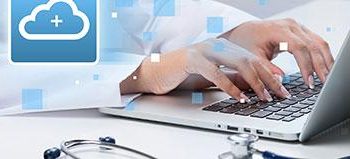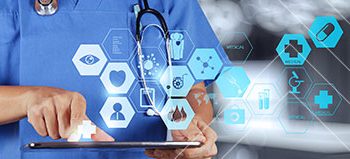Introduction
Remote patient monitoring (RPM) is a type of telemedicine technology that enables healthcare providers to monitor their patients’ health remotely. This technology utilizes remote devices that are placed in the patient’s home or worn by the patient to collect medical data such as vital signs and other medical information. This medical data is then transmitted to the doctor or healthcare provider to help them make better decisions regarding the patient’s care. RPM can be used to monitor a variety of conditions including chronic diseases, mental health issues, and post-operative care. It can also be used to support elderly individuals and those with disabilities. RPM has the potential to improve patient outcomes and reduce healthcare costs by enabling healthcare providers to monitor their patients’ health more effectively.
Benefits of Remote Patient Monitoring
- Increased Patient Engagement: Remote patient monitoring systems provide patients with a convenient way to stay engaged in their own healthcare. Patients can easily monitor their health and receive personalized feedback and advice from their healthcare provider.
- Improved Quality of Care: With remote patient monitoring, healthcare providers can more closely monitor the health of their patients and more quickly intervene when necessary. This can help reduce hospital stays, improve patient outcomes, and reduce healthcare costs.
- Reduced Healthcare Costs: Remote patient monitoring helps reduce healthcare costs by reducing the need for hospital visits and other expensive treatments.
- Improved Access to Care: Remote patient monitoring provides patients with access to care in remote or rural areas. This is especially beneficial for elderly and disabled patients who may not have access to regular healthcare services. 5. Improved Patient Safety: Remote patient monitoring can help reduce the risk of medical errors and ensure that patients receive the most appropriate care for their condition.
Impact of Remote Patient Monitoring on Healthcare
Impact of Remote Patient Monitoring on Healthcare Remote patient monitoring (RPM) is a revolutionary technology that has the potential to revolutionize the way healthcare is delivered. RPM is a form of telemedicine that allows for remote monitoring of a patient’s vital signs, such as heart rate and blood pressure, as well as other data, from a distance. This technology can be used to provide better care while also reducing costs and improving access to care. RPM has the potential to improve outcomes by providing real-time access to data, which can be used to detect changes in health status and intervene quickly. Additionally, this data can be used to monitor patients with chronic conditions and help to predict and prevent exacerbations.
Furthermore, RPM can help reduce hospital readmissions by providing clinicians with timely data and alerts so they can address problems quickly and prevent further complications. RPM can also be used to improve access to care, especially in rural areas. By providing remote monitoring, healthcare providers can provide care to patients who would otherwise not be able to get to a clinic or hospital. Additionally, this technology can help reduce costs associated with travel and other expenses. Finally, RPM can help to improve the patient experience by providing more convenient and personalized care. With remote monitoring, patients can receive.
Types of Remote Patient Monitoring
- Telehealth: Telehealth is a form of remote patient monitoring that uses video conferencing to connect patients to healthcare providers. This allows patients to receive real-time care and advice without having to physically visit a doctor’s office.
- Wearable Devices: Wearable devices are a form of remote patient monitoring that collects data from a patient and transmits it to a healthcare provider. Examples of these devices include fitness trackers, blood pressure monitors, and glucose monitors.
- Mobile Health Apps: Mobile health apps are a form of remote patient monitoring that allow patients to track their health data on their phones. These apps can be used to monitor vital signs, medications, and overall well-being.
- Home Medical Equipment: Home medical equipment is a form of remote patient monitoring that uses sensors to measure vital signs and sends the data to a healthcare provider. Examples of this equipment include scales, spirometers, and electrocardiograms.
- Remote Patient Monitoring Platforms: Remote patient monitoring platforms are software systems that allow healthcare providers to monitor a patient’s health data in real-time. This data can be used to track vital signs, medications, and overall health status.
Future of Remote Patient Monitoring
The future of remote patient monitoring is bright. With the increasing prevalence of digital health technologies, remote patient monitoring is becoming more accessible to a wider range of patients and healthcare providers. As technology advances, the use of remote patient monitoring is expected to continue to expand. This will allow for more consistent and accurate monitoring of patient health, which will lead to better outcomes for patients and increased efficiency for healthcare providers. Additionally, the data collected from remote patient monitoring can be used to improve care processes and outcomes for all patients, allowing for more tailored and personalized care. In the future, remote patient monitoring could become the standard for patient care, allowing for better, more comprehensive care for all patients.
According to MarketsandMarkets The global remote patient monitoring Market in terms of revenue was estimated to be worth $53.6 billion in 2022 and is poised to reach $175.2 billion by 2027, growing at a CAGR of 26.7% from 2022 to 2027.
Related News:


